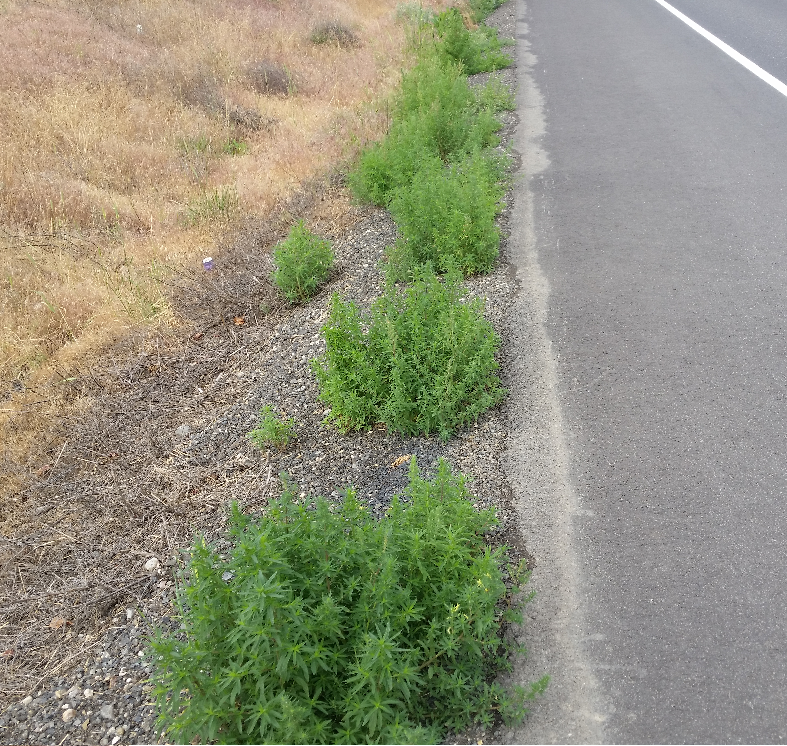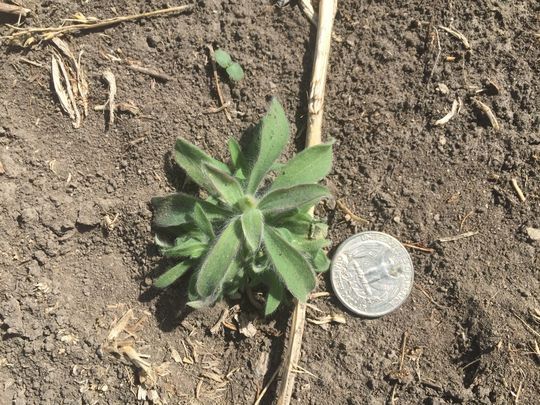May 2017
Kochia (Scoparia)
Kochia is a summer annual plant and it is a class “B” noxious weed in our county. In eastern Washington, Kochia is widespread. Kochia is very drought tolerant and can invade both irrigated and dryland crops. The economic impacts hit crops such as potatoes, alfalfa and wheat. Maintaining healthy pastures and fields will keep Kochia from establishing.
It is important to remove the tumbleweeds from fence lines to prevent further soil infestation.
Kochia Identification:
Seedlings are fuzzy and gray-green in color. The infestations can appear to be a gray-green mat. The plant has many branches that can be green or red tinged and form pyramidal or conical shaped bushes that can get greater than 6 ft. tall. The leaves on older plants are alternate and often hairy. Flowers are inconspicuous.
Kochia Life Cycle:
Kochia germinates many times during the growing season beginning in March. The last flushes of seedlings will be in August to early September. Flowering and seed production occur from July to October.
When the plant is mature in the fall, it breaks off the roots becoming a tumble weed and up to 14,600 seeds per plant are then dispersed by tumbling.
Controlling Kochia:
Kochia has a shallow taproot in the early growth stages and can be easily hand pulled or hoed. Early light tillage will disrupt the young plants from the soil and gives good control of the seedlings.
If you are using herbicide apply it when plants are small and in the 2-6 inches. If they are smaller than this the seedlings are too fuzzy with little leaf surface area for chemical contact.
Kochia will produce seed on branches below mowing levels so mowing and cutting are limited options being timed to just before seed production.
If the plant has already started producing seed it is best to collect the plants dispose of them and their seeds. Limit tractor, animal, and people traffic through infested areas to decrease it’s spread.
Another thing to consider is planting other plants as competition. Desirable plants will limit Kochia that is established.




